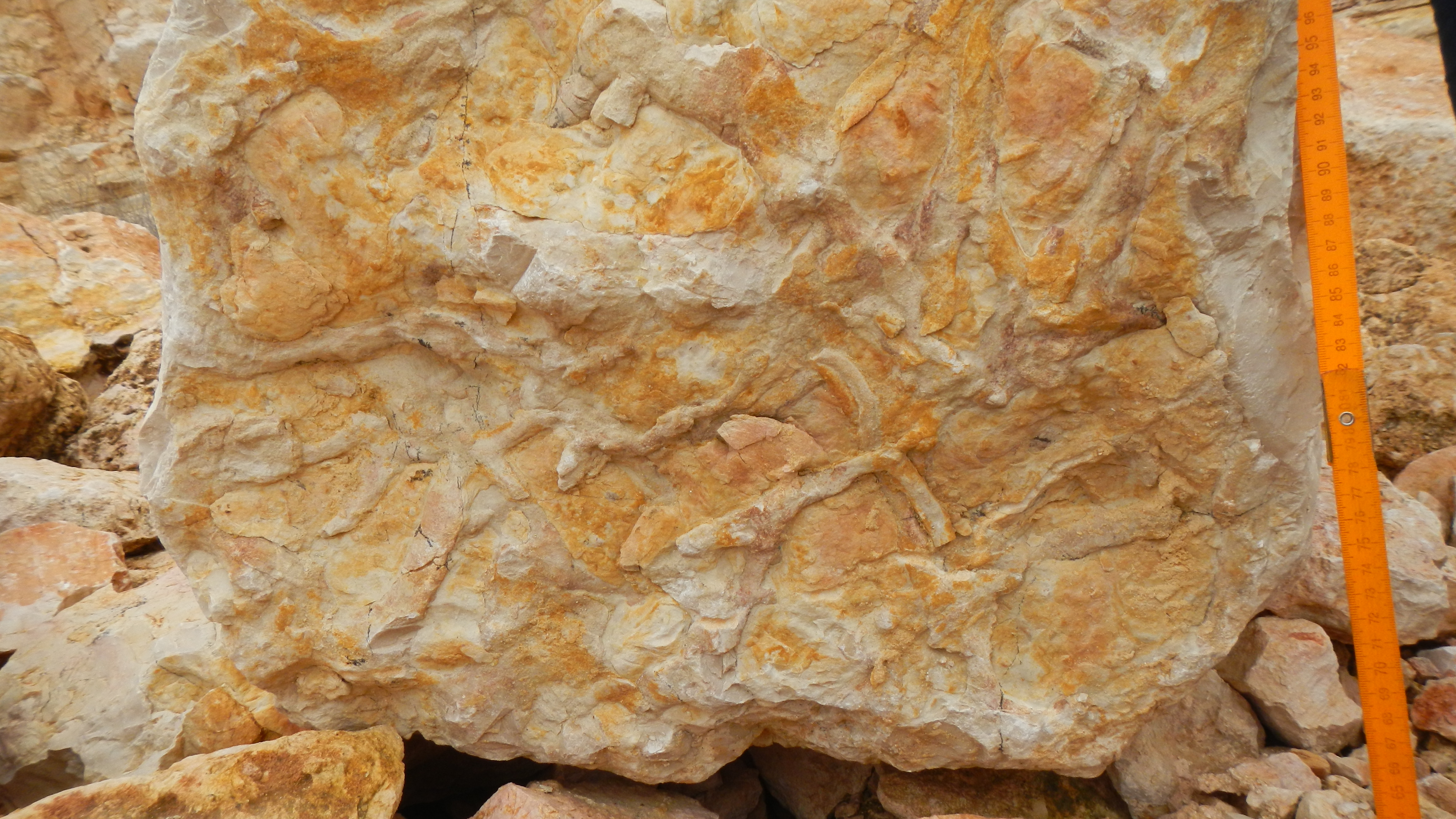During the first week of February 2024, the deparetment of Geology was visited by Prof. Dr. Alfred Uchman from the department of Geography and Geology of the Jagiellonian University in Kraków, Poland, who arrived in the frame of the Erasmus+ programmer. The visit aimed renovation of the collaboration initiated just before the pandemic in 2021. Prof. Alfred Uchman is a specialist on ichnology, i.e., traces of life activity or organisms recorded in sedimentary rocks. Study of the traces helps to recognize biosphere in the geological past and to interpret palaeoenvironment. During the visit, organized by Prof. Abdella Abu Hamad, and assisted by Dr. Habes Al-Mashakbeh, Professor from the Al al-Bayt University in Mafraq, several exposures of rocks have been visited for recognition of their potential for joint research.
During the first day, quarries of the Cretaceous Wadi-es-Sir Limestone near Hayan Al-Rwoibed were visited. On several surfaces of beds, fossil burrows of marine crustaceans have been observed. The burrows are extensive, branched, tunnels, mostly a few centimetres in diameter, produced in shelf sediments and filled later (Fig. 1). They are called Thalassinoides. This trace fossil is common in the Cretaceous marine rocks, which are widespread in Jordan, especially in its northern part.
Next days of the visit were destined for exploration of the Lower Triassic deposits belonging to the Ma'in Formation and well exposed in gorges (wadi) on the western coast of the Dead Sea. These deposits, mainly red mudstones, siltstones and sandstones, accumulated mostly on tidal flats. In their lower part, traces of life activity, mainly casts of traces of crawling on sediment surface, are small and poorly diverse (Fig. 2). There are larger, and more diverse in the upper part. This reflects recovery of the ecosystem after the worldwide biotic crisis at the Permian-Triassic boundary, during which many organisms became extinct. The recovery took several millions of years.
The date collected during the visit are the basis for publications which are in preparation. Hopefully, this is the first step for further collaboration between Jordanian and Polish geologists based on scientific and educational programs.
Fig. 1. Thalassinoides on surface of a limestone slab in a quarry near near Hayan Al-Rwoibed. Wadi-es-Sir Limestone.


Fig. 2. Traces of crawling on sediment surface produced by small invertebrates. A cast on lower bedding sandstone from the Lower Triassic deposits of the Ma'in Formation. Wadi Ad Dardour.

